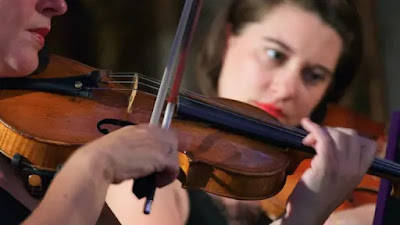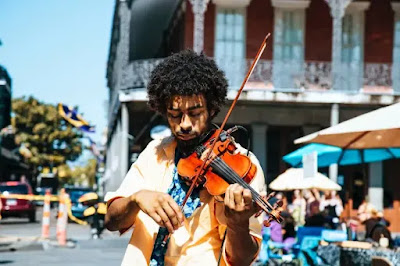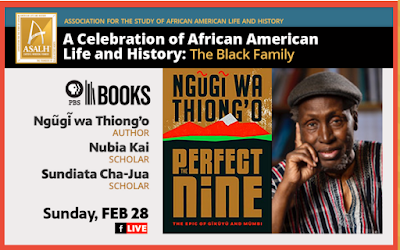IS CLASSICAL MUSIC RACIST? AN AESTHETIC APPROACH
Is classical music racist? Following the events of the summer of 2020 that exposed for many the depth of systemic racism within the justice system, people of color and their allies have raised the issue of racism in countless artistic and academic fields, classical music being no exception. Writing in the New Yorker in regard to classical music’s belated self-criticism, the critic Alex Ross admitted “such an examination is sorely needed in classical music, because of its problematic past.” Many other critics have answered definitively in the affirmative, or at least acknowledged major structural shortcomings in the design of the field. NPR critic Tom Huizenga has lamented “Why is American Classical Music so White?” Author and screenwriter Candace Allen, former wife of the British conductor Simon Rattle, has discussed the racist attitudes to which she has been subject, and declared that Black audience members are often made to feel unwelcome. Philip Ewell’s incendiary and accurate article “Music Theory and the White Racial Frame” begins with a necessary but seemingly self-evident proclamation – “music theory is white” – and explodes much of the entire field of theoretical musical analysis. Brandon Keith Brown, a Black conductor based in Berlin, has argued that “It’s Time to Make Orchestras Great Again – By Making Them Blacker.” Neybal Maysaud, a Lebanese-Druze composer, declares the entire genre as being so problematic that “It’s Time to Let Classical Music Die.”
In this blog post, I argue that the answer to the question of whether classical music is racist ought to be yes; but that casting the answer in terms of aesthetics provides a more coherent framework and points toward possible solutions. Like many fields, classical music’s chosen method of diversifying has not addressed its own values and approaches in order to become more inclusive, but rather has sought to diversify the population in which it inculcates a particular set of aesthetic priorities. Consequently, aesthetics themselves can end up constituting a structural barrier to diversification. Despite a number of commendable diversity initiatives, the aesthetics of the performance and pedagogy of classical music still do not resonate with many members of communities of color in the United States, and this is because the field has approached diversification as a project of assimilation, rather than integration. In addition to substantial change in the compositional diversity of performers, students, and audience, true diversification of the field will ultimately require aesthetic integration, the blending of more than one aesthetic approach to create something new that appeals to a diverse constituency. We might take African-American musical aesthetics as a point of comparison; what would a truly integrative approach that produces a new set of aesthetic priorities look like?
Defining Terms & The Aesthetics of Black Music
Readers of this blog are obviously familiar with the concept of aesthetics; in relation to music, I am conceiving of aesthetics as a concept of the beautiful and ideal expression to which all intentionality and training aims. I take here Webster’s dictionary definitions of “assimilation,” meaning “to absorb into the cultural tradition of a group; to make similar,” and “integration” as defined as “to form, coordinate, or blend into a functioning or unified whole”; and particularly, “to end the segregation of and bring into equal membership in society.” This latter definition is particularly important because the American classical music tradition has consistently subordinated African-American musical genres and aesthetics, just as Blackness in all of its forms has been consistently subordinated throughout American history.
In his 1983 article “Black Music as an Art Form,” Olly Wilson identifies six features of the African-American musical aesthetic: (1) use of rhythmical ambiguity and polyrhythm; (2) instruments played for percussive effect and to create stress accents; (3) call-and-response structures abound on multiple levels; (4) high musical event density; (5) a “heterogeneous sound tendency” consisting of many voices of opposing timbres simultaneously; and (6) the use of the physical body in making music.
From a slightly different perspective, in her examination of the swing era, Brenda Dixon Gottschild articulates five distinct aspects of an African-American aesthetic in swing music:
- “Embracing the conflict,” the friction created by discordant or “noisy” sound quality, contrasting with the emphasis on a resonant, “clean” sound in classical music training;
- “High-affect juxtaposition,” a mash-up of unrelated or even opposing moods or attitudes without transition, intended to disrupt continuity, contrasting with the highly formalized transitions between mood in traditional classical music;
- “Ephebism,” in which every note or movement is infused with “quintessential vitality,” giving it everything one has;(One might argue that the best musicians of any tradition infuse every note with “quintessential vitality.” Why is this not an apt descriptor for an expert performance of Tchaikovsky’s violin concerto, for example? The difference is that here the full force of artistic vitality directs the creation of the product, as opposed to through-composed European music in which the pre-existing composition directs the expression of vitality.)
- The predominance of rhythm over melody and use of complex counterrhythms, contrasted with the centrality of melody and harmony in classical music resulting in rhythmic/beat flexibility dictated by melodic phrasing;
- “The Aesthetic of the Cool,” maintaining the dynamic between incredible intensity and virtuosic “hotness,” and a calculated air of a calm, even careless attitude.
While there is considerable overlap between Wilson and Gottschild, two aesthetic qualities are particularly salient: the centrality of rhythm and the use of complex polyrhythm, and a sound quality that is percussive and/or not “clean.” One reason for pairing these, besides the fact that the use of rhythm and the conception of sound are two of the most distinctive musical features, is that African-American aesthetics are rooted in African survivals.
Both the centrality of rhythm and this sound concept represent attempts to imitate the natural phenomena for African cultures, including the human voice. While many writers have expounded upon the imitation of the human voice in African diasporic music, it is interesting to note that Kivy’s cognitive speech theory of musical expression – that music directly resembles the “passionate speaking voice” – holds that all music, including that in the European classical tradition, functions as a “speech icon” in its imitation of a speaking voice. The distinction between vocal diction in a European style versus an African-American style would seem to thereby be relevant.
On Rhythm
The centrality of polyrhythm, rhythmic call-and-response, and rhythmic syncopation in music of the African diaspora, including gospel, jazz, rock, and hip-hop, is hardly in dispute. Yet, a long-standing racist canard has been that the repetitive hooks of funk, the laconic harmonic progressions of hip-hop, and animalistic physical responses they inspire are representative of an unsophisticated, “primal,” and even “pre-conscious” culture. How might we situate this category of musical response as distinctly Black without passing uncomfortably close to these racial stereotypes?
In Black is Beautiful: A Philosophy of Black Aesthetics, Paul Taylor makes the excellent observation that we are looking at this equation backward. Music of the African diaspora has centralized rhythm in ways that European music has not, and European cultures have historically marginalized people of the African diaspora on the basis of their supposed intellectual inferiority and in sophistication. Music focused on rhythm, therefore, must be inferior and unsophisticated. But rhythm can be just as complex as any fugue or twelve-tone composition, and is just as capable of generating complex emotional and cerebral responses. Taylor uses the excellent term “dynamic repetition” to refer to musical content within jazz and funk tunes that the unobservant listener might categorize as endless repetition, remarking that “we continue to listen to the repeating riffs of funk… because the repetitive macro-structure is built from constantly shifting rhythmic micro-elements, and because we take pleasure in the way these micro-innovations surprise us while still sustaining the overall pattern of musical organization.”
Part of the problem is that even musically sophisticated Western listeners are not trained thoroughly in the analysis of dynamically repetitive music. Western music has long emphasized the importance of melody and harmony over rhythm. Kant’s theory of music, for example, held that harmony, and then melody, were the most important music elements due to harmony’s mathematical perfection, while Schopenhauer proclaims, “… in the deepest notes of the harmony, the will begins to objectify itself… And lastly in the melody, in the high, singing, integral principal voice… I recognize the highest stage of objectification of the will, the contemplative life and strivings of the human.” In conservatories, students typically develop an understanding of music theory and what are termed “aural skills,” through analytical, pitch-matching, and sight-singing exercises prioritizing harmonic and melodic conceptualization, with a secondary emphasis on rhythm. In the crafting of a musical phrase in Western classical music, melodic and harmonic rhythm determine the ebb and flow of pulse. This simple musical dichotomy, between the primacy of melody and the primacy of rhythm, separates Western classical music from much of the music of the world. For those critics who might maintain the supremacy of Western harmonic concepts to rhythm alone, Taylor responds:
Rhythm is not primitive… it is not the case that [it] was fundamental to humankind at some distant historical remove, only to have been superseded by more sophisticated approaches to the organization of sound for enjoyment. Rhythm is fundamental: the capacity for rhythmic experience and the exploitation of this capacity are conditions of possibility… for the kinds of experiences, lives, and cultures that we have even now.
On Sound Quality
In terms of sound quality, classical music has historically valued a resonant, “clean” sound that can fill a concert hall without amplification. The great violin pedagogue Ivan Galamian advised students, in their production of an ideal string sound, to “start with a long note, seeking a place near the bridge where the most resonant sound is produced… with a gradually increasing speed of stroke… listen for the same resonant sound throughout.” Researchers have found that trained music teachers judge the sound quality of classical instruments according to the “purity” and “clarity” of a sustained tone.
As Duran and Stewart have pointed out, the historical African-American sound concept relates more closely to a heterogeneous conception of speech (1997). Floyd and Wilson also establish that Black music historically uses instruments and voices to imitate natural sounds (Floyd, 1997; Wilson, 1983). A counter-essentialist note: This is not to say that there are not African-Americans who make and prefer a pure, resonant sound on their instruments or voices, or that Black gospel, for example, is never “clean.” Instead, it is to say that if the aesthetic conception of sound production within classical music conflicts with the historical African-American aesthetic, we ought not to be surprised that the genre has not spontaneously enjoyed greater popularity within the African-American community, and ought to recognize that expecting African-Americans as a group to absorb, appreciate, and elevate this particular European sound conception is an assimilationist approach.
Let us acknowledge that the elevation of any particular sound conception over others is, by definition, a supremacist claim; and that rhythm, harmony, and melody could be supposed to be musical equals. How could we move towards an integrated aesthetic in these arenas? Presumably, an integrated approach would teach mastery of both sound concepts while holding neither in higher regard than the other, and integrate a higher level of rhythmic training into beginning and advanced pedagogy. We might go further and also require that this approach incorporate the teaching of basic tools for improvisation. The music of a group such as Black Violin would seem to be a perfect example. This group plays Vivaldi and Bach, but usually amplified (so as to exercise multiple levels of control over their sound palette, and to be free of the need to create a purely acoustic sound that will fill a hall) and usually with a DJ providing a backbeat. Their videos often emphasize themes of Black liberation and achievement for Black young people, set to music played on classical instruments, combining improvisatory rhythms with traditional classical works. Multiple aesthetic elements are also being combined by a new generation of African-American classical composers such as Jessie Montgomery and Michael Abels, who write for traditional instruments but infuse their works with driving rhythms, jazz harmonies, and improvisatory sections.
A standard argument against an integrated pedagogy asserts that the exacting technical demands of classical music require absolute focus to the exclusion of all else. But it would be more realistic to acknowledge that the majority of conservatory students are not technically perfect by graduation, but rather, have the tools necessary to perfect this aesthetic. There is no reason that they might also be given the tools to create other sound worlds. Many segments of the classical music universe have already been going in this direction, as “extended techniques” – unconventional uses of classical instruments to produce unusual sound qualities and rhythms – have been in fashion for several decades.
A Concluding Note on Access Programs
Scholarships and fellowships for promising students of color at conservatories or orchestras exist throughout higher education. In an era when people of color aim to survive within white superstructures, they help us do just that: survive. However, in imagining a future in which we would actually thrive, we must acknowledge that because access programs facilitate access to an environment dominated by white aesthetics but do not require that environment to change. They allow the white majority within these institutions to imagine that their aesthetic choices and approaches are universalist, rather than particularist, and also require students of color to assimilate. But the assimilation of African-Americans into such a structure is a capitulation to “Euromodernity,” as captured by Lewis Gordon:
[A] good deal of Euromodernity was committed to black lives not mattering… the term simply means the constellation of convictions, arguments, policies, and a worldview promoting the idea that the only way legitimately to belong to the present and as a consequence the future is to be or become European. It places “European” as a necessary condition of belonging, continuation, and selfhood… which, in effect, relegates those who do not fit either to the past or to kinds of nowhere and no-man’s-land, what Fanon called the “zone of nonbeing.
Larry Neal goes a bit further in his quotation of Eldridge Knight:
Unless the Black artist establishes a “Black aesthetic” he will have no future at all. To accept the white aesthetic is to accept and validate a society that will not allow him to live. The Black artist must create new forms and new values, sing new songs… and along with other Black authorities, he must create a new history, new symbols, myths, and legends.
If Gordon and Neal are correct, then it is incumbent upon artists and institutional leaders of color to compel white institutions to integrate their aesthetics. Obviously, as major institutions have a mandate to serve national, indeed global, populations, an integrated aesthetic would not simply combine Black and white, but be more nuanced. But, such an aesthetic might assist classical music’s appeal to a global, and diverse, audience.
Christopher Jenkins is the Associate Dean for Academic Support at Oberlin Conservatory, as well as a Deputy Title IX Coordinator and Conservatory Liaison to the Office of Equity, Diversity, and Inclusion. He is currently earning a DMA in viola performance from the Cleveland Institute of Music and a Ph.D. in musicology from Case Western Reserve University concurrently, where his performance and research focuses on the music of African-American composers. In 2020, the ASA awarded him the Irene H. Chayes “New Voices” prize for his paper reimagining the practice of classical music through the lens of Black aesthetics.
Edited by C. Thi Nguyen


















